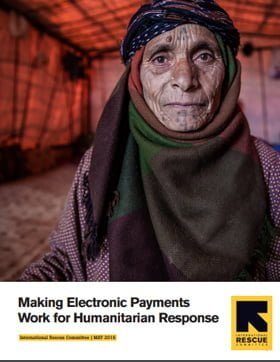Making Electronic Payments Work for Humanitarian Response
The dialogue leading up to the WHS has cast a spotlight on humanitarian cash transfers. Significant global attention has centered on the role of cash transfers in bringing efficiency to the humanitarian system and improving outcomes for crisis-affected populations. U.N. Secretary-General Ban Ki-moon has called for cash-based programming to be the default method of support for affected populations , and various high-level panels have called for broad scale-up of cash transfers in humanitarian programming. But is it actually possible to safely distribute cash to the millions of people displaced from their homes or impacted by disaster each year across the world?
To realise a global scale-up in cash transfers, countries facing crises must have the necessary infrastructure and financial services in place to make payments safely and efficiently. E-payment mechanisms, including mobile-based money transfers and cardbased payments such as prepaid debit cards, are effective tools that enable efficient and scalable transfers, improve transparency, and mitigate fraud in humanitarian response. However, these tools are not present in all countries. E-payment tools are increasingly common, but as yet impractical in countries with weak digital and financial infrastructure, regulatory environments, and/ or financial institutions.
Although there has been a substantial increase in donor and private sector interest and investment in digital finance systems worldwide during the past several years, countries or regions most at risk of natural or man-made disasters and where humanitarian organizations tend to respond are often overlooked in these investments.
The objective of this paper is to investigate both the current state of preparedness of e-payment systems to deliver cash transfers in emergency response, and the extent to which existing efforts are actually preparing those e-payment systems to meet the specific e-payment needs of humanitarian agencies.



